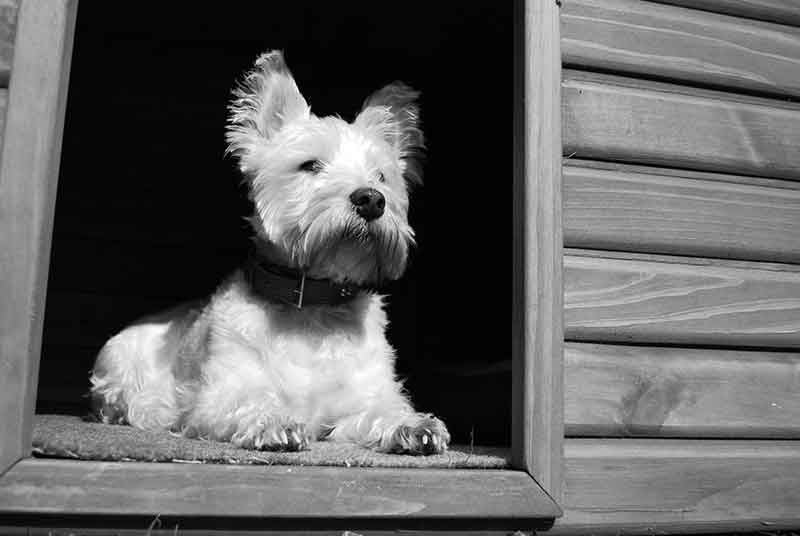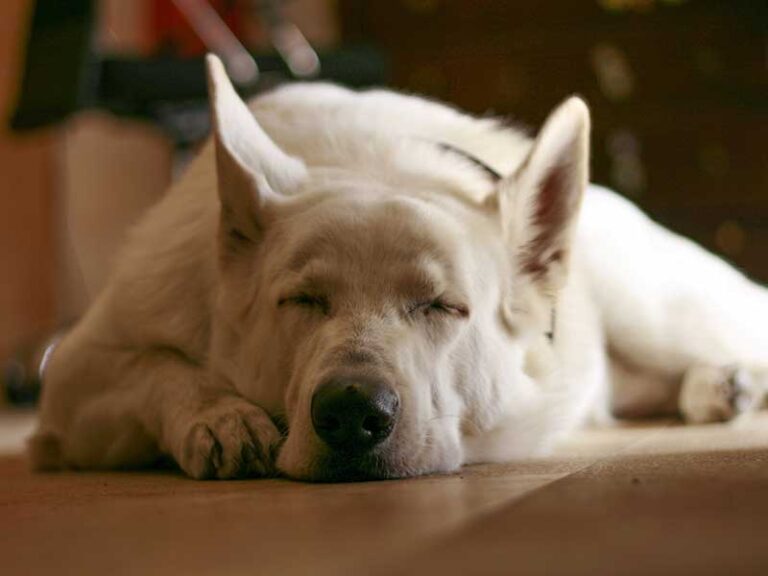What Temperature Is Too Cold For Dogs To Sleep Outside?
While some of us have a dedicated corner in our house for our dogs, some have a kennel for them outside. But can our pets sleep comfortably in their kennels when the temperature drops? And have you ever wondered what temperature is too cold for dogs to sleep outside? You will find complete answers to your doubts in this article, so read on!
So, What temperature is too cold for dogs to sleep outside? Dog breeds well adapted to colder climates can go up to -20⁰ Fahrenheit with very few problems. If not, you will have to move your pets indoors when the weather gets colder. And around 45⁰ Fahrenheit, your pet will feel uncomfortable staying outside anymore.
Many dog experts recommend bringing the pet inside at the start of the winter season. Canines are susceptible to hyperthermia and frostbite. Therefore, keeping an eye on your pets during the colder months can make their lives much easier.
What Temperature Is Too Cold For Dogs To Sleep Outside?
This is a common problem that many dog parents who house their pets outside face as the seasons change.
If you don’t like to have your dog inside your house, you will have to give them a proper setup instead. Even so, it is not wise to leave dogs outside when it is dropping below the preferable temperature for dogs.
For those of you who are wondering what temperature is too cold for dogs to sleep outside, here’s the answer. You must not leave your pets outside when it is below 40⁰ Fahrenheit.
Dogs will start to feel uncomfortable when it is around 45⁰ Fahrenheit. But if it keeps dropping, around 40⁰, the dog will most probably succumb to hyperthermia.
What Temperature Is OK For Dogs To Sleep Outside?
Many dog parents like to house their dogs outside. Many security dogs will have kennels outside the main house to get a good view of any intruder.
During the warmer seasons, when the temperature isn’t exceeding 85⁰ Fahrenheit, it is certainly OK for a dog to sleep outside.
But make sure your pet is well trained and will not eat any harmful plants that might be in your lawn. And when the temperature rises above 85⁰, it is wise to bring them inside. Not only is it cruel to keep your pet outside when it is that hot, but it is also unhealthy for the pet.
Additionally, during the colder months, you may house the dog outside with proper bedding preparations.
If the dog is left out with nothing to make himself warm, many dogs are at risk of even losing their lives. And as pet parents who love our fur kids very much, we don’t want that to happen.
So make sure that his kennel can perfectly keep your pet warm when they are outside. And it is better to bring them inside, at least for the night. Some nights are much colder than others, and the temperature will drop below 45⁰ Fahrenheit.
So without you inspecting the pet, you will put the canine in so much danger. And again, leaving a dog outside during colder days is cruel.
Can I Let My Dog Sleep Outside In Winter?
Let’s get one thing clear before you wonder what temperature is too cold for dogs to sleep outside. There are two types of dogs.
Dogs who are adapted to live in sub-zero temperatures
- Siberian Huskies
- Alaskan Malamute
- Newfoundland
- Saint Bernard
Dogs who are not adapted to living in sub-zero temperatures
- Great Danes
- Mastiffs
- Dobermans
- German Shorthaired Pointers
- Boxers
Therefore, you must consider this before deciding to let your dog sleep outside during winter. Next, if your dog is still a puppy, a senior dog, sick, or doesn’t have a thicker fur coat, it is recommended to bring him inside.
What Can You Do To Keep Your Dog Warm Outside In Colder Seasons?
Since some dogs are very much prone to hyperthermia when it is cold, there are some things to consider before housing a dog outside. And let me mention this again. Not when the colder seasons are at their max.
- Give him proper shelter
The only place your dog will be able to go if it is too cold is the dog’s house. But if that is cold, too, then he will be vulnerable to conditions like hyperthermia.
Therefore, if you are housing your pet outside during winter, a proper shelter is a must.
- Hoist his house off the ground
During cold seasons, snow or rain will dampen the ground. And the puppy will find it impossible to sleep in a damp place in the freezing cold.
And honestly, if you are keeping him out, the least you could do is give him somewhere to sleep comfortably. Hoisting the kennel off the ground will keep his floor dry and a little warm.
- Fill the kennel with some warm blankets
After you lift up the kennel off the ground, you can put the pup’s bed inside and make the bed with some blankets. But make sure you don’t do this when the kennel is on the ground.
Blankets and other fillers like hay quickly get damp and heavy. If these get wet, there is no doubt your pet will freeze and face a fatal condition.
- Get an outdoor heated dog pad or bed
There are many dog beds that you can use outside. And there is even an option to warm up the bed. You may use these on cold days but not when it is freezing. If it is, you better bring the dog inside.
- Provide warm water and good food
Other than these, it is equally essential that the dog has clean water to keep himself hydrated. And make sure to check the water bowl from time to time. The cold weather sometimes may freeze his drinking water.
And to keep the dog more energized, feed your dog with more nutritious food. Never let him sleep outside on an empty stomach.
We hope you received all the answers to your problem; the temperature is too cold for dogs to sleep outside and what you can do about it.
Stay tuned with Jack Russell Owner for more interesting posts about your favorite dog breed.








